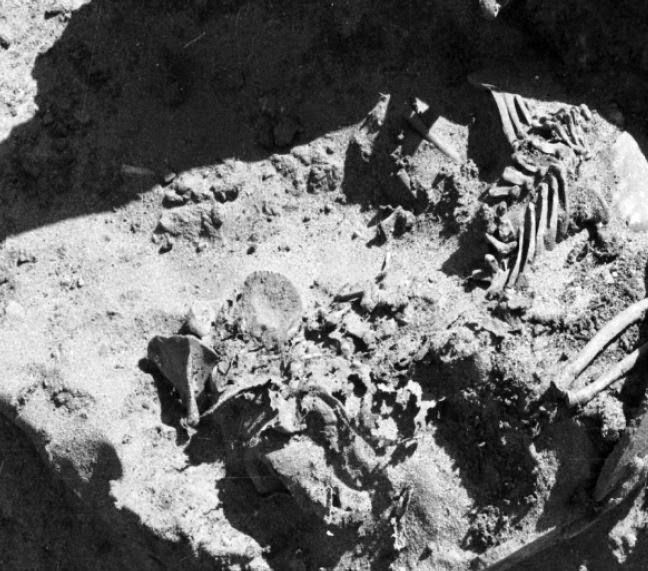BIOCULTURAL ANALYSIS OF NUBIAN FETAL POT BURIALS FROM ASKUT, SUDAN
LAUREN R. BRITTON
http://anthropology.cos.ucf.edu/main/wp-content/uploads/2012/08/Britton_fall2009_thesis.pdf
jueves, 9 de abril de 2015
lunes, 6 de abril de 2015
Mummy in the shape of a fish
Mummy in the shape of a fish, wrapped in linen bandages. The eyes are black painted circles and ring-shaped traces indicate the gills and the beginning of the tail. An X-ray examination of the mummy would be needed in order to determine its contents; from the outside appearance alone it is impossible to tell what kind of fish it is. Experience with other animal mummies, however, has shown that it is not even certain if we are dealing with a mummy of a fish or with that of another animal.
Mynia
Late period
KUNSTHISTORISCHES MUSEUM
globalegyptianmuseum
Mynia
Late period
KUNSTHISTORISCHES MUSEUM
globalegyptianmuseum
child mummy
The mummy of a child. The spinal column of the child is slightly twisted. The fractures in the area of the face and the pelvic region are post-mortem. Some of the bones of the left foot are missing; they may have fallen out of the mummy wrappings. The mineralisation of the bones is in accordance with the child's age (3rd - 4th year).
PTOLEMAIC PERIOD
KUNSTHISTORISCHES MUSEUM
PTOLEMAIC PERIOD
KUNSTHISTORISCHES MUSEUM
The mummified remains of a large serpent
The mummified remains of a large serpent, the bandages are loose and discoloured. The mummy lies in a coiled position.
Several important deities were represented by the serpent, notably the cobra goddess of the Delta, Wadjet, on the Uraeus, Meretseger, of the Theban Necropolis and Apophis.
GRAECO-ROMAN PERIOD ?
LIVERPOOL MUSEUM
globalegyptianmuseum
Several important deities were represented by the serpent, notably the cobra goddess of the Delta, Wadjet, on the Uraeus, Meretseger, of the Theban Necropolis and Apophis.
GRAECO-ROMAN PERIOD ?
LIVERPOOL MUSEUM
globalegyptianmuseum
Suscribirse a:
Entradas (Atom)



